Research on seabirds shows that waste lost to the environment was in someone’s hands at some point. Logically then, simple behaviour changes can reduce our impact on seabirds and other species.
Bringing our own reusables is an effective strategy for reducing the amount of waste in the environment, so it’s worth me covering the basics to give ‘newbies’ some confidence and direction, and ‘oldhands’ encouragement to keep it up.
My first tip is to keep your reusables everywhere you need them, like the boot of the car, the glove box, your handbag or backpack.
Bring your own bags
Plastic bags are everywhere – clothes stores, grocery stores, bookstores – they are constantly in our face! Unbelievably Australians throw away more than 7,000 plastic bags a minute.
The key here is to get in the habit of saying “no bag thanks” and having your reusable bag handy or being prepared to carry your purchase. I find my handbag is usually good enough.
Don’t fall into the trap of thinking a paper bag is okay to use once and then throw away. It may not have the end of use problems that plastic bags do, but paper bags still use a lot of resources during production.
Some people use single-use plastic bags as bin liners, here’s a post on why you don’t need a plastic bin liner.
If you have excess plastic bags you can take them to a REDcycle drop-off location at Coles or Woolworths. Use this locator to find your nearest collection point. Do not put plastic bags into your home recycling.

There is another category of plastic bag that is sometimes forgotten about – the supermarket produce bag. I have received a lot of positive interest about my reusable produce bags, and rightly so because they are a simple way to reduce your reliance on single use plastic bags. They are versatile, easy to wash, so light they don’t need to be weighed, and so compact they can be carried with you all the time. You will feel good about making this change.
Why stop there? Reusable cloth bags can be used for buying and storing bread, bulk foods, bi-carb soda and anything else you can get unpackaged. You can even use things like a pillowcase for collecting your bread. The best thing about all these bags, is that they can be made at home from old clothing and spare materials. That’s what I have been doing since committing to not using plastic bags.

Bring your own containers
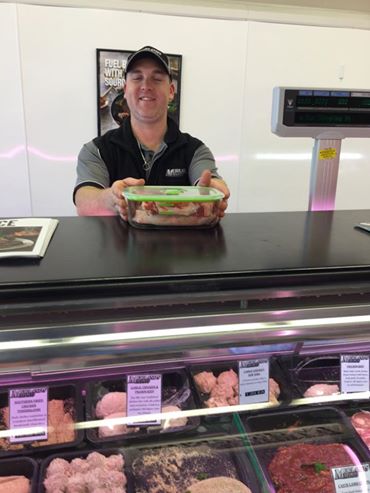
You can bring clean containers from home to collect your meat, fish, cheese and other items from the deli. I have used tupperware, plastic takeaway containers (that I reuse), and glass containers with good lids. You can also use metal containers and jars.
Be prepared for your request to be a challenge for customer service staff who have never been asked to use a container from home before. In my experience, once they get over the surprise of being asked to do something different, they will happily figure it out for you. You might have to tell them how to do it though. Be aware that Coles and Woolworths will not do this for you. My advice is to show your container as soon as you make eye contact and give a quick explanation because they are quick off the mark with grabbing those plastic bags or gloves, and will sometimes toss the bag in the bin if you don’t want to use it.
The assistant should place your container on the scale and press TARE before adding the food so that you only pay for the weight of the food. Most assistants ask me if I want the price label attached to my container; if you are not keen on cleaning them off then ask for it to be partially stuck to the edge of the container.
No doubt you will hear somewhere along the way that using your own containers is unhygienic or against health regulations. This is not the case, there is no law in Victoria against using your own containers (including for doggy bags at restaurants and cafes). However, they may choose to refuse your container under their own policies. There is also no law requiring disposable gloves be worn, or be disposed of after each serving. If gloves are not worn it’s best they use utensils.
I have found a butcher, a fishmonger, and a deli that are very welcoming and accommodating. To avoid using disposable gloves or bags when filling my container they use tongs, spoons, just their clean hands, or the lid of my container to collect my ham as it is being shaved which is then tipped into my container.
It will be a bit nerve wracking when you first use your own containers but stay strong and keep at it. You’ll be proud of yourself in the end.

Glass jars and bottles are reuseable containers that are perfect for collecting dried herbs, spices, salts, tea, oils, detergents, vinegar, and even takeaway drinks like juice and coffee, or food like icecream and dim sims! The uses are only limited by your imagination. The process for weighing your goods is the same as for meat and deli purchases. If you are going to bring a bottle to refill with a product you should know how many millilitres the bottle holds so that you can pay accordingly.
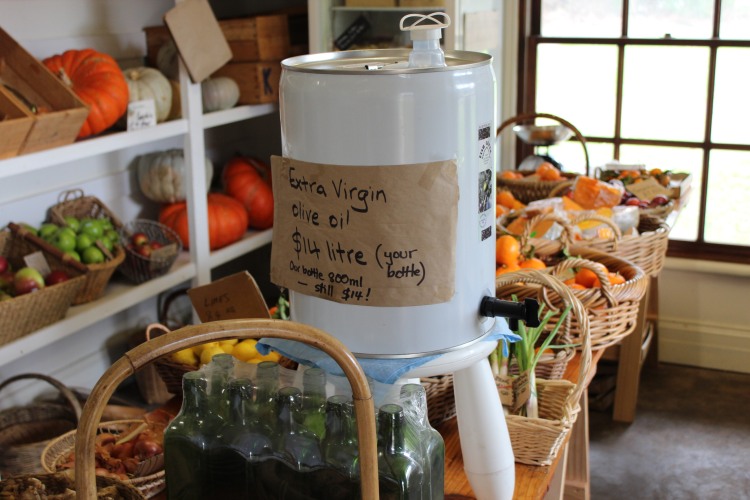
My key tip for using your own containers is to plan ahead and know what you want to buy so you can bring an appropriate container. Weekly meal planning is also a good way to reduce food waste.
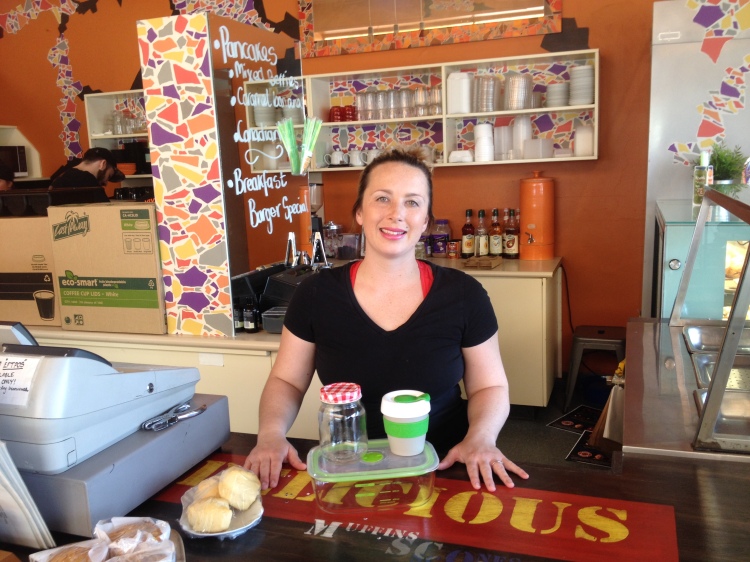
Bring your own cup
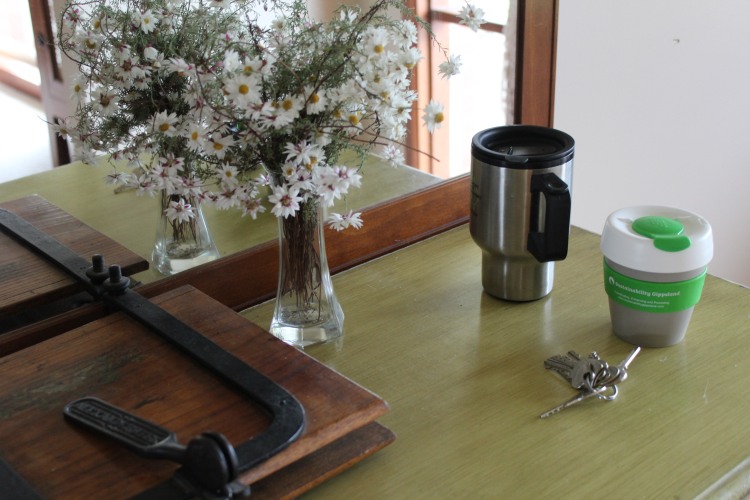
Paper coffee cups aren’t only made of paper, most are lined with a coating of polyethylene, a type of plastic and it is estimated that one million coffee cups are thrown away every minute! Reusable cups are best – and I bet you have one already so it won’t be an additional investment. If not, you could use a jar with a lid. These days there are also glass Keepcups and collapsable silicone ones that don’t take up much room. Most coffee shops will have had people use Keepcups before so you won’t need to feel shy about this behaviour change.
Bring your own water bottle
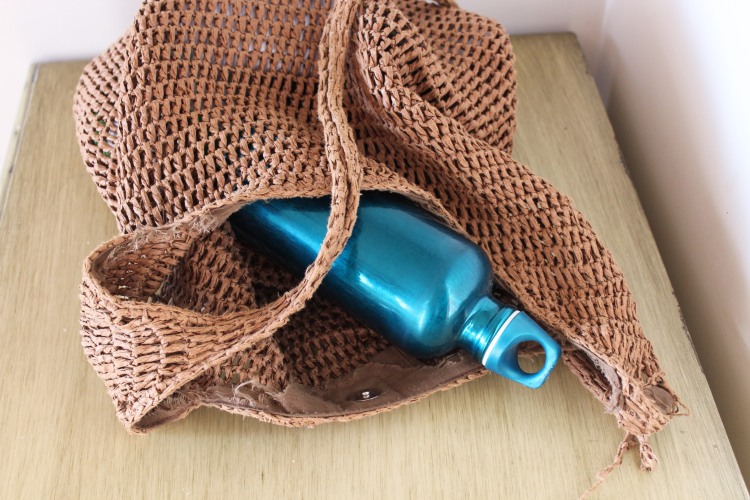
I don’t buy bottled water. Apart from the plastic pollution problem, it takes 7L of water and 1L of oil to manufacture a 1L plastic bottle of water, and who knows how far it has had to travel to get to you. These points really make it a ridiculous choice. Overall, tap water has 1% the environmental impact of bottled water.
Choosing tap water over other drinks when out and about is also important for reducing waste. It’s a good idea to get in the habit of having a stainless steel or glass water bottle handy at all times. Or you could slow down, sit down and order something like a freshly squeezed juice – just make sure you refuse the straw.
Bring your own cutlery and straw
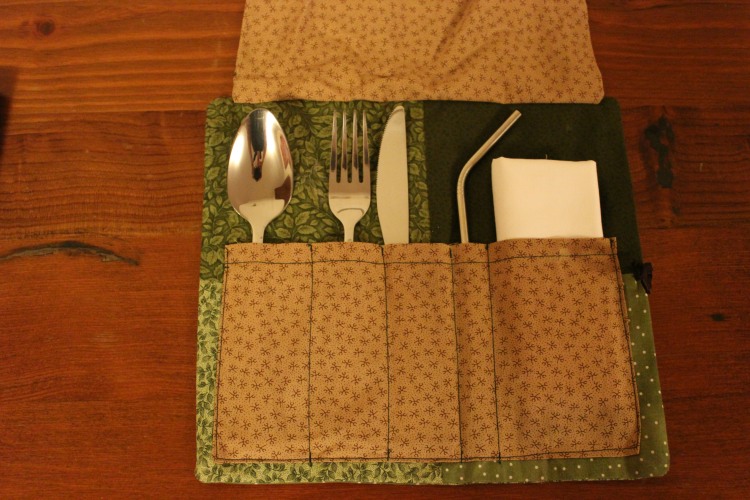
I made cutlery wraps for each family member to keep their cutlery and straw in their handbag, school bag, or car so that we never need to use plastic disposable ones. We haven’t needed to use them a lot but the kids think they are cool. You don’t need to make a wrap like this, just keep some cutlery and a straw nearby.
So your challenge is to try one of these five things that you haven’t been doing already, take a picture and put it on my Facebook page or Instagram. Tell me how your experience was and please use the hastags #bringyourowngippsland and #gippslandunwrapped. It is a great way to connect with each other and share our experiences as well as make it easier for others to find places that welcome #bringyourowngippsland. I can’t wait to see all your pictures!
If you are discouraged by the lack of bulk stores in your area then check out how I do it here.
This post contains an affiliate link. Please refer to my disclosure statement for more information.

I was searching my blog for the photo of my BYO produce bags that I have been using for at least 5 years. I bought them from LikLikMunki (I think that’s the name) years ago and every stall holder (and many customers) at WGL Farmers market always comment. Lost count of the number of times I’ve given out the details. 2 Christmases ago my presents to family was 2 bottles homemade passata (in recycled stubbies), home grown garlic, home made pasta, some of these bags and one of the bags was the gift bag with everything inside it. Tied around the neck with a crocheted bright coloured recycled woollen string. Was a great gift, wish someone had given me one! Tried BYO container at local deli and they covered the scale with a plastic bag! Need to keep chipping away on that one 🙂
LikeLiked by 1 person
That sounds wonderful, I would love that gift too. Containers at the deli is hard. It’s like they really don’t get that the point is waste reduction – especially plastic. I’ve had disappointing situations like that. Now I stick with a couple of businesses that have gotten to know me and do it well. Keep it up!
LikeLiked by 1 person
Hi Fergie51, Yes LikLikMunki made the produce bags and all sorts of wonderful things from material remnants and old T-shirts, but she is currently in Melbourne looking after an aged mother and mother-in-law so has dropped out of the market place.
LikeLiked by 2 people
Are the home made produce bags made from tulle?
LikeLiked by 1 person
I think the white ones are tulle. It didn’t have it written on the label. You can reuse any similar material you have lying around.
LikeLike
Old small washing bags work well too. You know the ones used for washing bras in the machine.
LikeLiked by 1 person
Oh yeah, I know what you mean 😊
LikeLike
i was refused the use of my Keepcup for takeaway coffee for the first time ever when I stopped at a cafe in San Remo. I was told that it was against Health Regulations, and when I persisted was told it was local Shire regulations. I can’t find anything on the Bass Coast Shire website. After some discussion I decided to try a cardboard paper cup he offered which he claimed contained no plastic and was fully biodegrable. He had 2 types on offer – the standard one which was not biodegradable, and the one I chose which has ‘Environmentally Friendly’ written on it and a picture of a tree (of course I didn’t take a plastic lid). I then transferred my coffee into my Keepcup and told him I was going to compost the cup and see if there was a plastic residue. However it’s possible that the plastic fragments would be too small to detect. It certainly looks like pure cardboard, but if so, would it be waterproof?
LikeLiked by 1 person
I can’t believed you were refused. I’ve had one bad reaction to a keepcup in a café but not refused. Good on you for doing all that. I know that many biodegradable cups still aren’t great but it depends on the brand. Maybe it is bio plastic because I don’t think it would be water proof otherwise. To be honest I haven’t looked into it because Ive always used a keepcup or sat in to drink. I’m very very sceptical that it is against Council regulations. I currently have a long list of questions being answered by the Health Department which I will post the answers to as soon as I get them.
LikeLike
We have a Health Department employee staying with us at present and he says there is no such regulation from them (in fact he said ‘bullshit’). He thinks it may be possible for a Shire to have their own. I plan to go to the Bass Coast Shire offices when next in Wonthaggi and see what I can find out.
LikeLiked by 1 person
Yep. This is what I have in writing from Health Department as a starting point “It is the responsibility of a food business to produce safe and suitable food, as specified under the Food Act (the Act) and Australia New Zealand Code (the Code). Neither the Act or the Code references packaging that is provided by the customer. This means that it would be up to the individual business to determine if it is appropriate for a container provided by the customer can be used.”
So the business has to own their decision and not blame some regulation. I am aware though that some councils can make things difficult for food and drink vendors.
Let me know if you find out anything interesting.
LikeLike
Hi again Wendy. Just got my answers from the Health Department so I’ll publish that blog soon. I thought you’d be interested in this bit though “As stated in my original response there is no legislation that would prevent a business allowing a customer to use a Keepcup. You could always advise the business that you will be speaking to the council to check if this claim is true, but, at the end of the day it is a choice by the business to not allow this practice to occur. Council would not have any power to make them undertake this practice, as it is out of the scope of the Food Act. “
LikeLike
Because I so rarely go to San Remo, I’m unlikely to visit the cafe owner again to tell him what I have found out. Looking at the bigger picture, because so few people bring their own take-away cups unfortunately, if the cardboard cups he provides don’t contain plastic as he claims, then he may be having a more beneficial effect on the environment overall.
LikeLike
I work in a business that has lots of keep cups come across the counter. My only request is that you wash it before handing it to us.
LikeLiked by 1 person